Why invest in commodities like gold?
Disclaimer: The below article is for informational purposes only and does not constitute a product recommendation, or taxation or financial advice and should not be relied upon as such. Please check with your adviser or accountant to obtain the correct advice for your situation.
With an increase in trade tensions – particularly between the US and China triggering fears about global economic growth – investors have been increasingly looking to diversify their portfolios. For some investors, that includes investing in commodities like gold.
In this article we look at some of the reasons investors choose to diversify into commodities, and how investors might achieve that exposure.

Why invest in commodities? Asset class diversification
At Sharesight, we typically see investors who hold a majority of their portfolio in stocks, ETFs and managed/mutual funds. While many implement diversification strategies that involve investing across industries and geographies, it’s important to consider the role asset class plays when building a diverse defensive investment portfolio.
What attracts investors to gold in particular?
Gold is shiny, and people like shiny things. Gold also just happens to be the commodity that formerly backed many of the world’s currencies, in particular the US dollar under the gold standard until it was abandoned in 1971. Because of this, gold is seen by many investors as a safe haven in unstable times, and as a diversifying instrument that can preserve wealth during market volatility.
Does gold preserve wealth during market downturns?
Gold is seen to have a low to negative correlation with other asset classes such as stocks and bonds, in particular during periods of economic slowdown. To test the theory, we looked at the approximate price of 1oz of gold (USD) with the S&P 500 Index since 1995. There were two recessions during this period and in each case gold prices did not go down with the index.
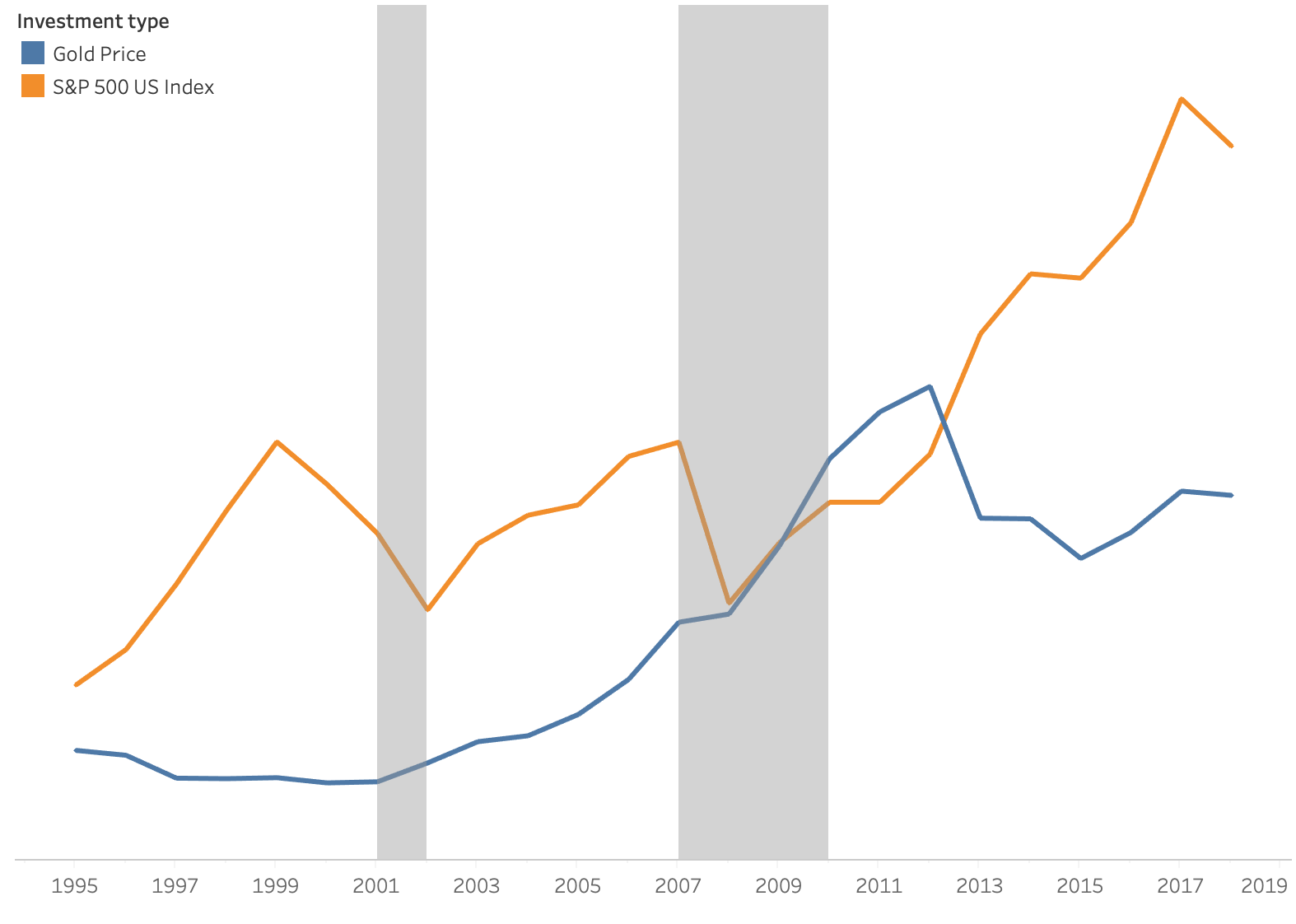
However, looking back further than 1995 things aren’t so clear-cut.
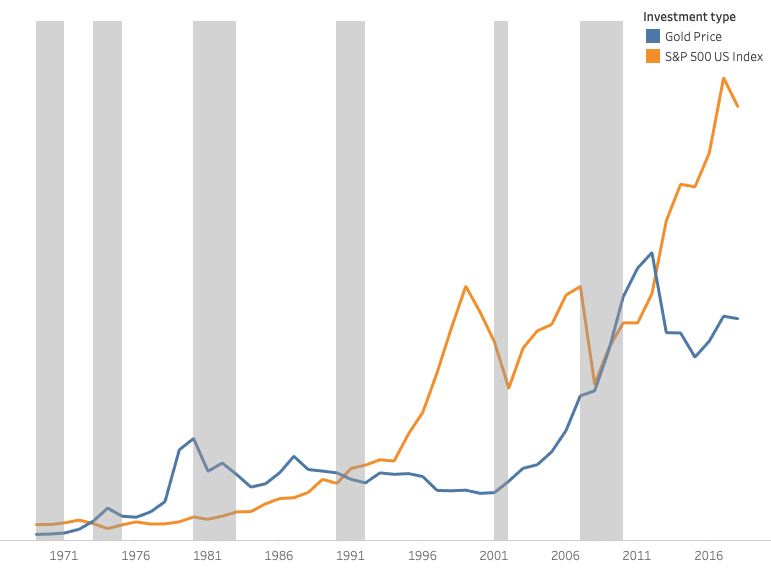
Downsides of investing in gold
Unlike stocks, gold isn’t income-generating (unless you invest indirectly via stock in a mining company). Another negative is the difficulty of analysing the pricing fundamentals, with the value of gold depending on a range of macroeconomic factors not directly related to demand. In addition, there are storage and maintenance costs to consider.
How can investors access investments in gold?
There are a number of ways investors can gain exposure to gold, including:
-
Physical gold: This is probably one of the ‘safest’, but most illiquid gold investment option, with the cumbersome factors of handling and secure storage. To ease those pain points, some distributors provide storage and issue a certificate for the holding.
-
ETFs: Gold ETFs are the easiest and the most convenient way to invest in gold because you need not worry about the storage and handling of the physical asset. It’s important to note that some ETFs just track the gold price, while others own the physical gold. Examples include: ETFS Physical Gold (ASX: GOLD), Perth Mint Gold (ASX: PMGOLD), BetaShares Gold Bullion ETF - Currency Hedged (ASX: QAU) for Australian investors, and SPDR Gold Trust (AMEX: GLD) and iShares Gold Trust (AMEX: IAU) internationally.
-
Stocks of gold mining companies: Another option is to purchase the stock of companies in the gold mining business. As the price of gold fluctuates, the stock price will also vary, but the impact might not be in the exact same proportion, since it will depend on various other factors such as company management and governance, future prospects, investments in development, etc. Some examples of gold mining companies listed on the ASX are Newcrest Mining Limited (ASX: NCM), Northern Star Resources Ltd (ASX: NST), and Oceana Gold Corporation (ASX: OGC). There is also the option of gold mining ETFs which track not just Australian gold mining companies, but international ones as well. For example, VanEck Vectors Gold Miners ETF (ASX: GDX) is listed on multiple international exchanges including the NYSE, LSE, etc. Other examples of international gold mining ETFs are iShares S&P/TSX Global Gold Index ETF (TSX.XGD) and iShares MSCI Global Gold Miners ETF (NAS. RING).
-
Gold CFDs, futures and options: These are all derivatives that involve speculating on the price of gold at a future date, but differ slightly in their structure and execution. These products may also carry additional risks, particularly in the case of CFDs which are typically highly geared investments - where it is possible to lose more than the initial investment amount .
How to track gold investments in Sharesight
If you decide to buy a gold ETF or mining stock, it’s easy to track it in Sharesight. Simply search for the stock ticker as you would for any share, then add it to your portfolio. From there, all prices and dividends will automatically update in Sharesight.
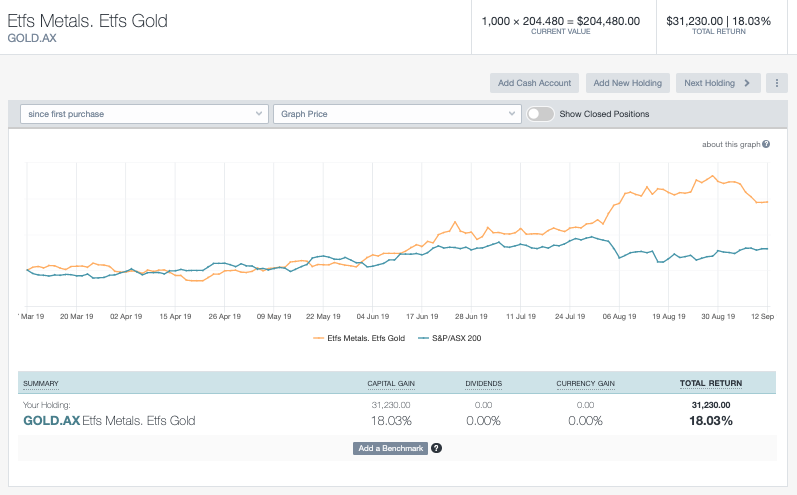
For other gold investments (such as physical gold or certificates), you can use Sharesight’s custom investment feature. By adding a custom investment for the gold and entering price movements regularly for the holding, you can easily track the performance of your gold holdings over time.
Here are some data sources for gold prices:
How to track your gold asset allocation
To further analyse and monitor the impact on asset allocation on portfolio performance, you can use Sharesight’s Diversity Report. Start by using Custom Groups to define the assets by the underlying holding properties then find the asset allocation for each class.
In the following example, we have classified the holdings under domestic and international stocks, bonds, and separated the gold investments by classifying those as ‘Gold ETF’ and ‘Physical Gold’ (though you may prefer to combine these last two).
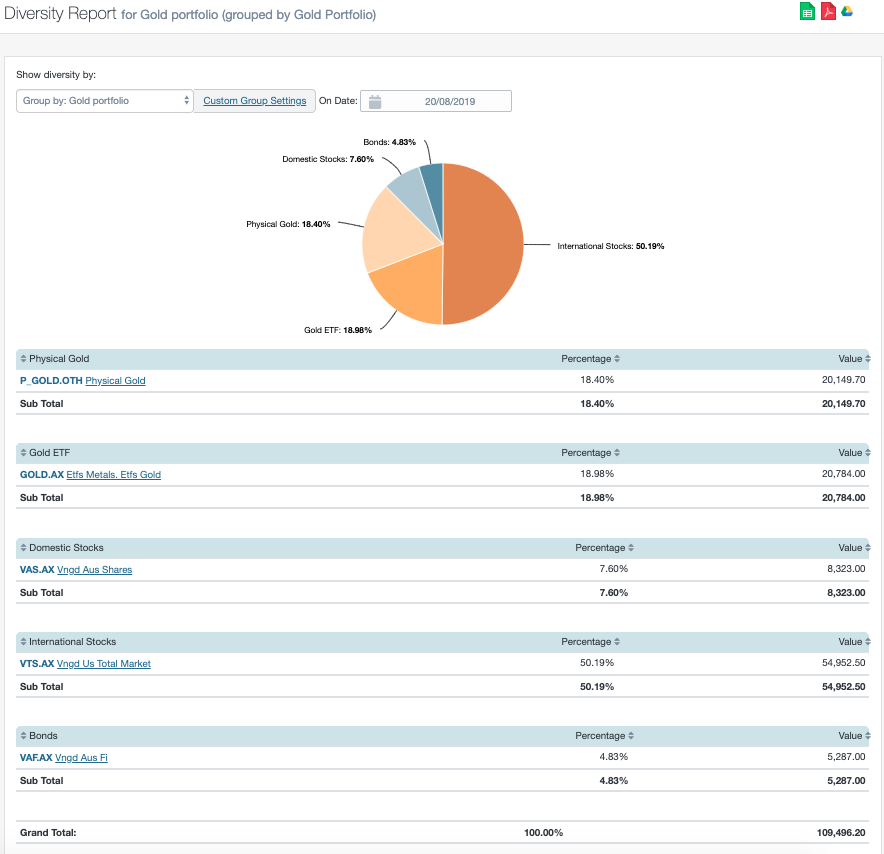
Is gold all that glitters in volatile times?
So is gold a good defensive asset? It depends who you ask. Warren Buffet captures the present state of affairs and the value of gold as:
"Gold is a way of going long on fear, and it has been a pretty good way of going long on fear from time to time. But you really have to hope people become more afraid in a year or two years than they are now. And if they become more afraid you make money, if they become less afraid you lose money, but the gold itself doesn't produce anything."
Be a rational and disciplined investor with Sharesight
A big part of being a disciplined investor is to document and stick to your investment strategy. Above are just some of the ways Sharesight makes it easy to track your asset allocation and your investment performance over time.
With Sharesight you can:
-
Get the true picture of your investment performance, including the impact of brokerage fees, dividends, and capital gains with Sharesight’s annualised performance calculation methodology
-
Automatically track your daily price & currency fluctuations, as well as handle corporate actions such as dividends and share splits
-
Run powerful tax reports built for investors, including Capital Gains Tax (Australia and Canada), Unrealised Capital Gains, (Australia) and Taxable Income (All regions)
The best way to understand what Sharesight is all about is to sign up and try Sharesight for yourself. We’re confident that you’ll agree that it’s the best portfolio tracker for investors.
FURTHER READING

Sharesight users' top 20 trades – June 2025
Welcome to the June 2025 edition of Sharesight’s monthly trading snapshot, where we look at the top buy and sell trades by Sharesight users in all markets.
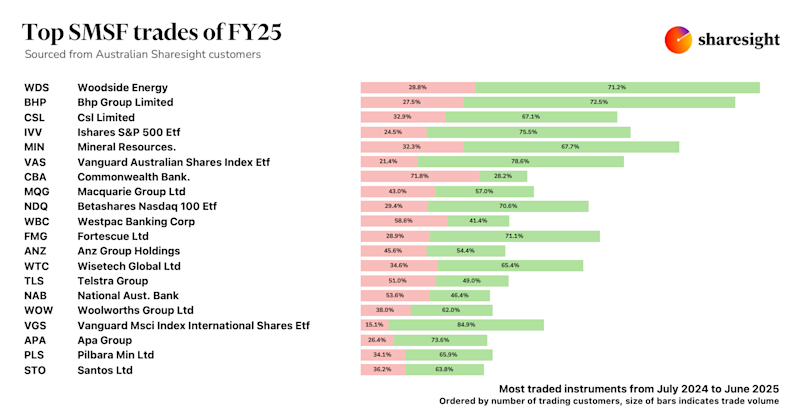
Top SMSF trades by Australian Sharesight users in FY24/25
Welcome to our annual Australian financial year trading snapshot for SMSFs, where we dive into this year’s top trades by Sharesight users.
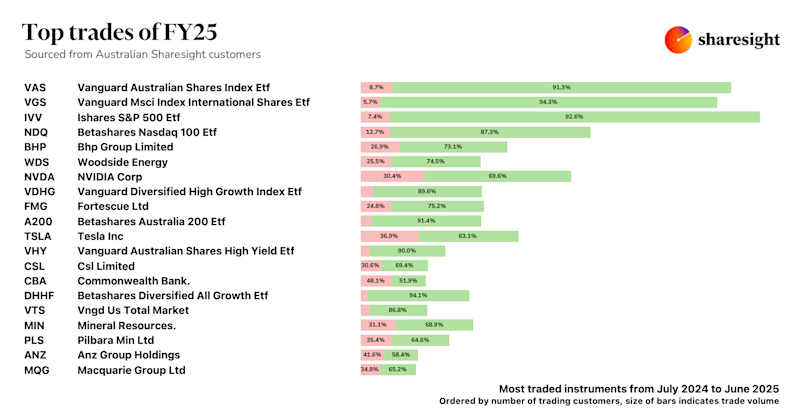
Top trades by Australian Sharesight users in FY24/25
Welcome to the FY24/25 edition of our Australian trading snapshot, where we dive into this financial year’s top trades by Sharesight users.